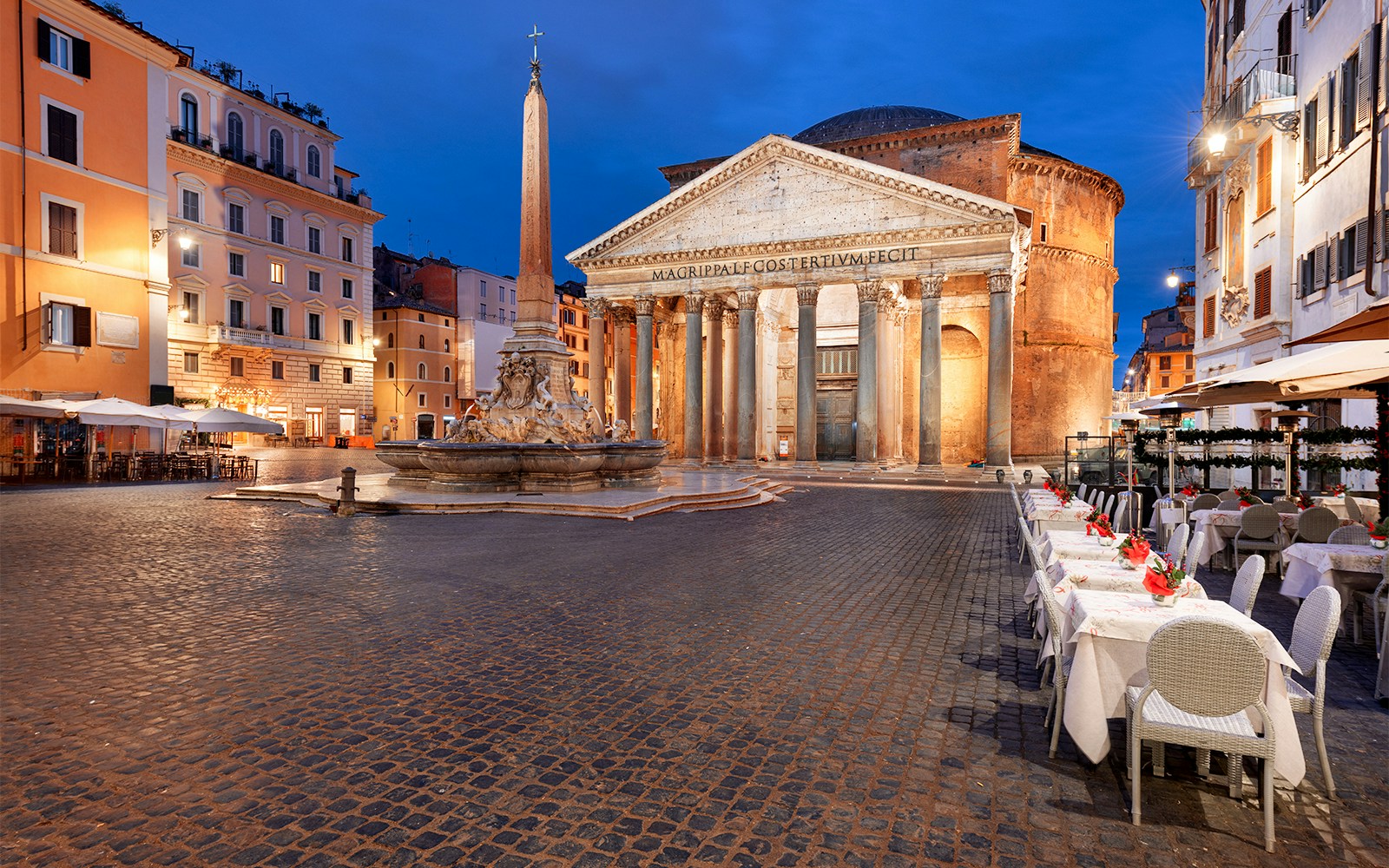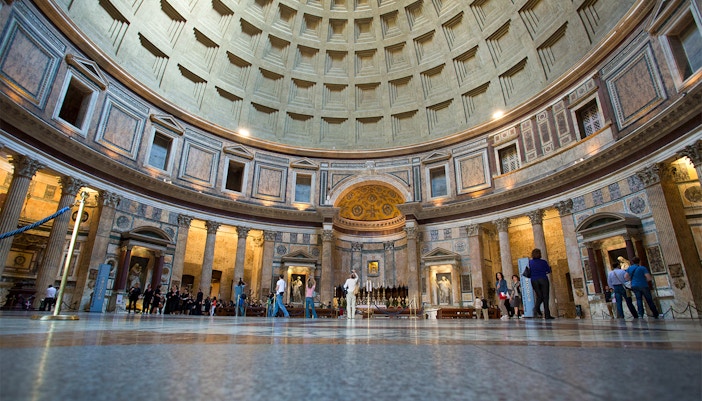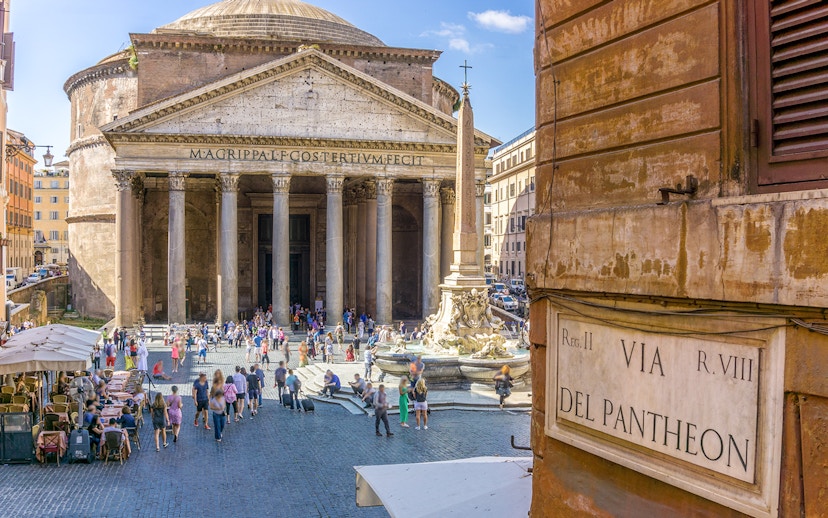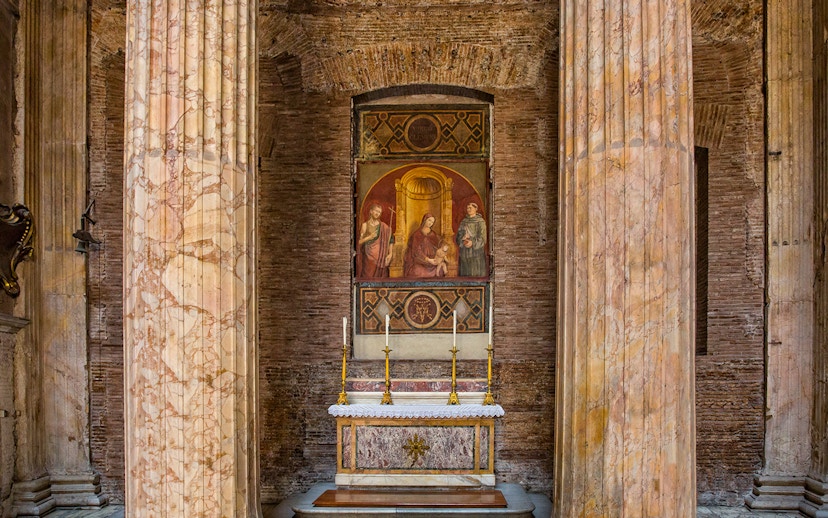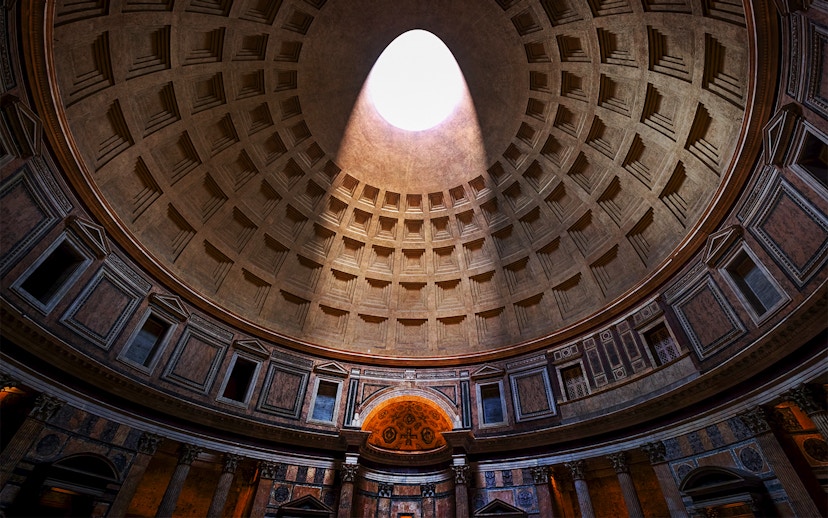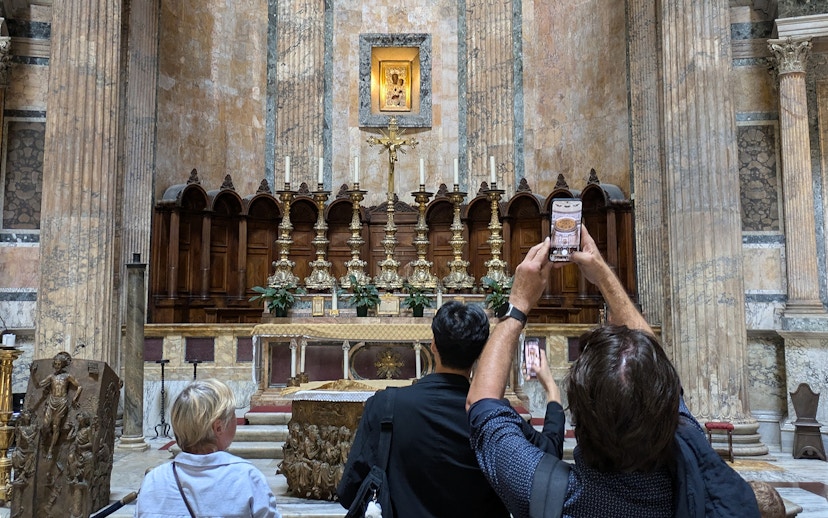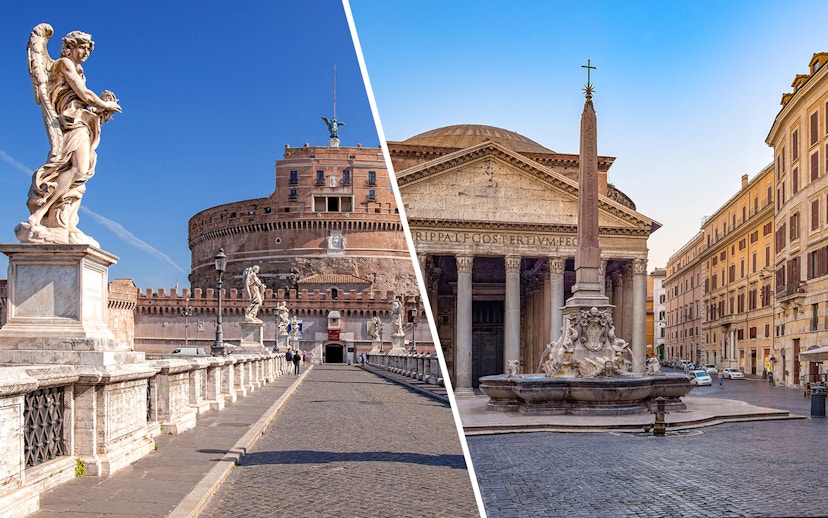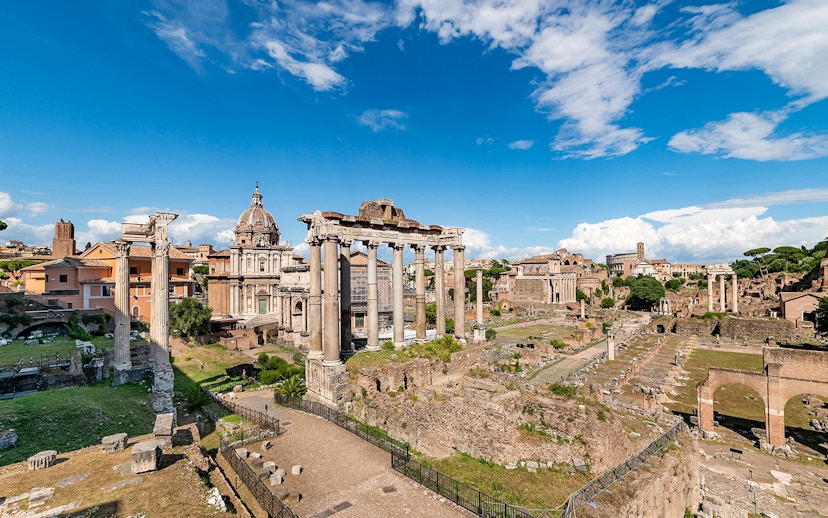- Date of opening: 27 BC (original temple), rebuilt in 126 AD
- Architect: Marcus Agrippa (original), Emperor Hadrian and Apollodorus of Damascus (reconstruction)
- Architectural style: Roman Classical
- Notable feature: World's largest unreinforced concrete dome
- Dome's dimensions: Diameter of 43 meters (142 ft)
- Unique symmetry: Height and diameter of interior circle are equal

